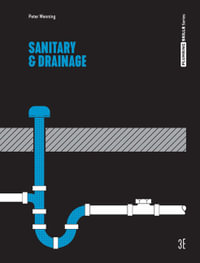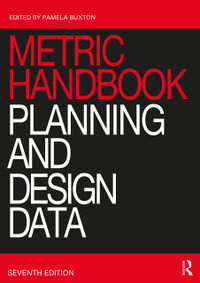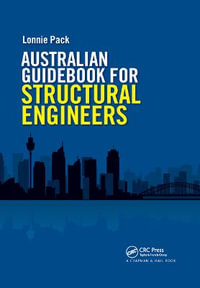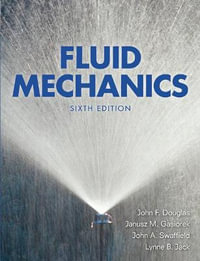| Preface and Acknowledgements | p. xiii |
| Design preliminaries | p. 1 |
| Introduction | p. 1 |
| Assessment of information | p. 2 |
| Preliminary identification of species | p. 2 |
| Consideration of specific constraints | p. 4 |
| Consideration of performance requirements | p. 5 |
| Approach to design | p. 6 |
| Programming | p. 8 |
| Interpretation and use of supporting information | p. 9 |
| Additional testing and investigations | p. 19 |
| Costs, confidence and the proactive approach | p. 22 |
| Chapter summary | p. 25 |
| Essential legislation | p. 28 |
| Introduction | p. 28 |
| Town and Country Planning Act 1990 | p. 29 |
| Highways Act 1980 | p. 29 |
| Water Industry Act 1991 | p. 35 |
| Water Resources Act 1991 | p. 36 |
| Water Act 1989 | p. 38 |
| Party Wall etc. Act 1996 | p. 38 |
| Environment Act 1995 | p. 41 |
| Environment Protection Act 1990 | p. 44 |
| Construction (Design and Management) Regulations 1994 | p. 44 |
| Consultations and agreements | p. 48 |
| Introduction | p. 48 |
| Environment Agency | p. 49 |
| Water and Sewerage Undertakers | p. 58 |
| Adoption of sewers | p. 60 |
| Sewer requisitions | p. 62 |
| Sewer diversions | p. 65 |
| Trade effluent consents | p. 67 |
| Planning authority | p. 69 |
| Highway authority | p. 70 |
| Building control | p. 71 |
| Utilities and statutory undertakers | p. 72 |
| Police and emergency services | p. 73 |
| Others | p. 74 |
| Environmental issues | p. 75 |
| Introduction | p. 75 |
| Planning stage | p. 79 |
| Construction and waste materials | p. 82 |
| Site hazards | p. 84 |
| Water and land drainage | p. 86 |
| Contaminated land | p. 86 |
| Drainage design | p. 89 |
| Introduction | p. 89 |
| Terminology | p. 90 |
| Layout of sewers | p. 93 |
| Hydraulic design | p. 95 |
| Flow and energy losses | p. 96 |
| Part full pipes | p. 102 |
| Channels | p. 105 |
| Structures of the sewerage system | p. 113 |
| Pumping stations | p. 113 |
| Pump tyres | p. 115 |
| Pumping mains | p. 118 |
| Tidal, estuarine and river outfalls | p. 121 |
| Manholes | p. 124 |
| Gravity sewers | p. 127 |
| Inverted syphons | p. 127 |
| Flushing chambers | p. 130 |
| Storm water overflows | p. 131 |
| Surface water drainage | p. 135 |
| Introduction | p. 135 |
| Surface water sewage | p. 135 |
| Design practice | p. 137 |
| Area to be drained | p. 137 |
| Catchment characteristics | p. 137 |
| Consideration of future development | p. 138 |
| Rainfall statistics | p. 140 |
| Determination of the design storm | p. 143 |
| Evaluation of surface run-off | p. 146 |
| Retention | p. 147 |
| Impermeability and infiltration characteristics | p. 147 |
| Conveyance to sewers | p. 149 |
| Calculating the rate of run-off | p. 149 |
| Rational method | p. 150 |
| TRRL hydrograph method | p. 159 |
| Surface water drainage and pollution | p. 165 |
| Sustainable Urban Drainage Systems (SUDS) | p. 169 |
| Source control | p. 171 |
| Permeable conveyance systems | p. 173 |
| Passive treatment systems | p. 175 |
| Soakaways | p. 176 |
| Design considerations | p. 176 |
| Principles of soakaway design | p. 181 |
| Bibliography | p. 183 |
| Highway drainage | p. 184 |
| Introduction | p. 184 |
| Conventional kerbs and gullies | p. 186 |
| Porous pavements | p. 190 |
| Run-off to channels | p. 190 |
| Over the edge drainage | p. 190 |
| Foul drainage | p. 191 |
| Introduction | p. 191 |
| Domestic sewage | p. 192 |
| Trade effluent | p. 192 |
| Foul sewer design | p. 195 |
| Sewer rehabilitation and repair | p. 197 |
| Introduction | p. 197 |
| Trenchless techniques | p. 199 |
| Rehabilitation and repair | p. 199 |
| Sliplining | p. 199 |
| Spray lining | p. 203 |
| Close fit lining | p. 204 |
| Cured in place lining | p. 205 |
| Localised repair and seal | p. 207 |
| On-line replacement | p. 210 |
| Pipe laying and materials | p. 213 |
| Introduction | p. 213 |
| Pipelaying practice | p. 213 |
| Pipe bedding and sidefill materials | p. 215 |
| Trenchless technology | p. 218 |
| Pipejacking and microtunnelling | p. 219 |
| Directional drilling and guided boring | p. 222 |
| Impact moling and pipe ramming | p. 223 |
| Pipe materials | p. 224 |
| Roads | p. 226 |
| Introduction | p. 226 |
| Pavement design | p. 228 |
| Preparation and construction | p. 229 |
| Capping and sub-base layers | p. 231 |
| Subgrade improvement and sub-bases | p. 233 |
| Cement/lime stabilisation | p. 233 |
| Alternative materials | p. 235 |
| Flexible construction | p. 238 |
| Sub-base | p. 238 |
| Roadbase | p. 239 |
| Basecourse | p. 239 |
| Wearing course | p. 239 |
| Flexible composite construction | p. 239 |
| Rigid construction | p. 240 |
| Rigid composite construction | p. 241 |
| Pavement materials and their properties | p. 241 |
| Asphalt | p. 241 |
| Coated macadam | p. 243 |
| Pervious macadams/porous asphalt | p. 245 |
| Asphaltic concrete | p. 245 |
| Bitumen technology and testing | p. 246 |
| Bitumen technology | p. 246 |
| Bitumen testing | p. 248 |
| Penetration test | p. 248 |
| The softening point test (ring and ball) | p. 249 |
| Viscosity test | p. 249 |
| Fraas breaking point test | p. 250 |
| Types of bitumen | p. 250 |
| Cutback bitumen | p. 251 |
| Hard and oxidised bitumen | p. 251 |
| Penetration grade bitumen | p. 251 |
| Evaluation of the performance of bituminous materials | p. 251 |
| Nottingham asphalt tester (NAT) | p. 252 |
| Gyratory compactor | p. 253 |
| Wheel tracker | p. 253 |
| Aspects of pavement construction | p. 254 |
| Pavement defects and their treatment | p. 254 |
| Loss of surface texture | p. 254 |
| Cracking | p. 257 |
| Surface dressing | p. 261 |
| Assessment of design parameters | p. 261 |
| Selection of aggregates, chippings and binders | p. 263 |
| Site preparation, application & traffic management | p. 264 |
| Applications of surface dressing | p. 266 |
| Thin surfacings | p. 267 |
| Retexturing | p. 267 |
| Milling (planing) and regulating an existing surface | p. 268 |
| Overlays | p. 268 |
| Road recycling | p. 269 |
| In-situ recycling | p. 269 |
| Central plant recycling | p. 270 |
| Pavement assessment | p. 270 |
| High speed road monitor | p. 270 |
| Visual inspection | p. 271 |
| Deflection testing | p. 271 |
| Ground penetrating radar | p. 272 |
| Surface treatment of rigid pavements | p. 273 |
| Surface dressing | p. 273 |
| Thin bonded surface repairs | p. 274 |
| Mechanical roughening | p. 274 |
| Transverse grooving | p. 275 |
| Joint repairs | p. 275 |
| Defects in rigid pavements | p. 275 |
| Summary of surfacing performance | p. 278 |
| Road design | p. 279 |
| General design practice | p. 279 |
| Trunk roads and major highways schemes | p. 279 |
| Residential/industrial estate roads | p. 280 |
| Private roads | p. 281 |
| Commonly identified highway design problems | p. 282 |
| General highway design parameters | p. 284 |
| Junction types | p. 285 |
| Roundabouts | p. 285 |
| Major/minor junctions | p. 286 |
| Grade-separated junctions | p. 288 |
| Signal controlled junctions | p. 288 |
| Elements of design | p. 288 |
| Stopping distances and forward visibility | p. 289 |
| Horizontal alignment | p. 289 |
| Vertical alignment | p. 290 |
| External works and other surfaces | p. 296 |
| Introduction | p. 296 |
| Bituminous parking areas | p. 296 |
| Asphalt games and sports areas | p. 298 |
| Decorative and coloured finishes for asphalt | p. 298 |
| High stress applications of asphalt | p. 299 |
| Types of surfacing | p. 300 |
| Clay and concrete blocks/bricks | p. 300 |
| Setts, cobbles bricks and wood blocks | p. 300 |
| Flags and slabs | p. 301 |
| Paths, kerbs and channels | p. 301 |
| Emergency accesses | p. 303 |
| Verges, grassed areas and planting | p. 304 |
| Index | p. 305 |
| Table of Contents provided by Syndetics. All Rights Reserved. |
























